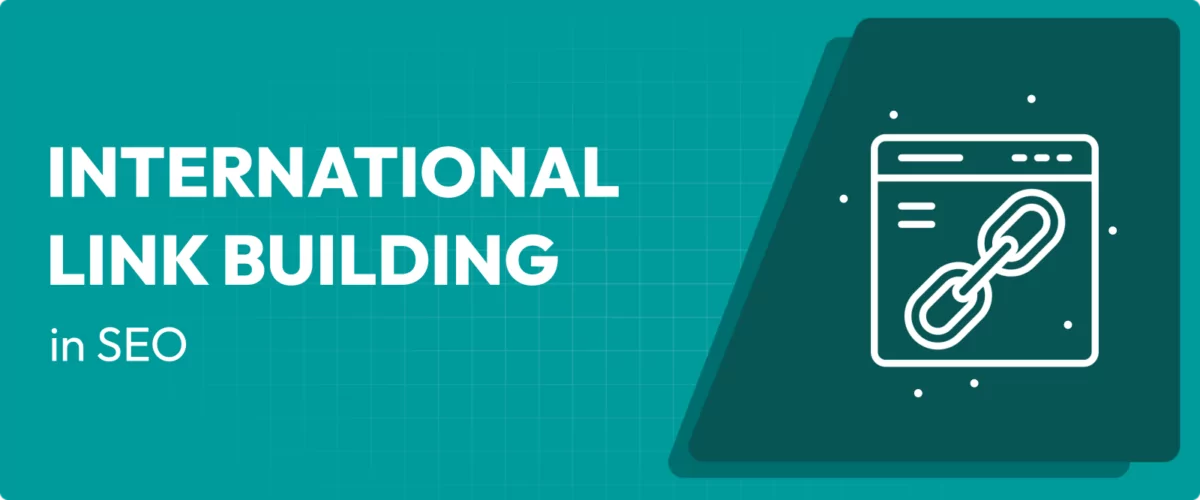
In this post
Your business does not only serve its local market. The global web lets you reach audiences wherever they may browse from. However, this brings a new set of challenges focusing on standing out among international Search Engine Results Pages (SERPs). This is where your international link building expertise comes into play.
I work with many businesses across the world, so I see the impact that a quality international link building strategy can have on global visibility. As such, I’ll share my insights in this post on how to master this crucial aspect of global SEO. By the end, you’ll have the knowledge to boost your international search rankings and drive traffic from diverse regions.
What International Link Building Is
Before we dive into the strategies, let’s define what international link building means. At its core, this is the process of acquiring backlinks from websites in different locales to improve your search rankings within those specific markets. It’s similar to typical link building, but with a wider scope.
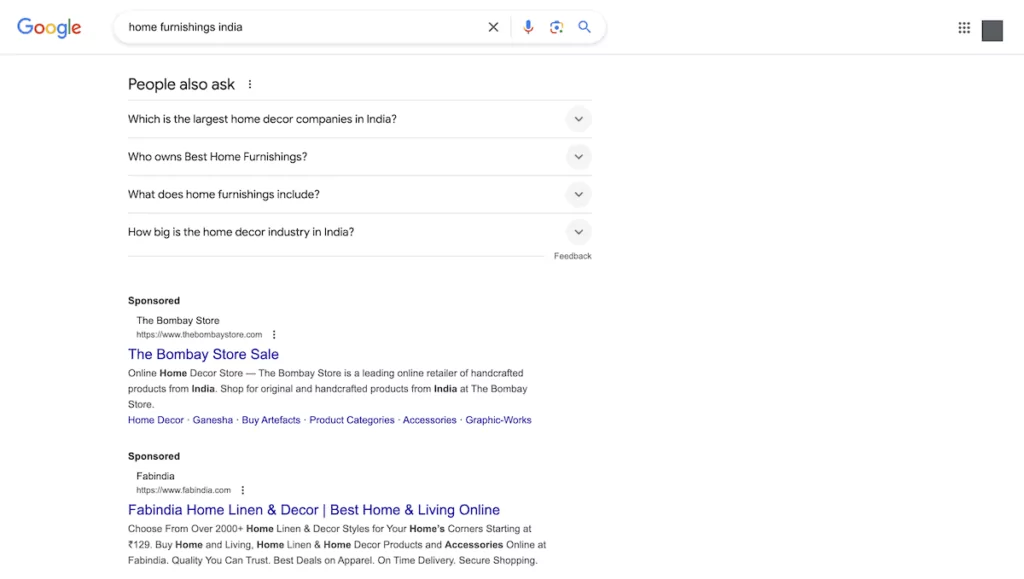
Backlinks (or inbound links) are essentially votes of confidence from other websites. When a reputable site links to your content, it’s sign that search engines think the content is valuable and authoritative. This principle applies globally, but international link building takes it a step further by focusing on acquiring links from region-specific websites.
Why International Link Building Is So Crucial for Global Success
You might wonder why you can’t focus only on building links from high-authority sites, regardless of the location. While general link building has a lot of worth and benefits, international link building gives you a few uniques plus points:
- Improved local search rankings. Search engines use country-specific algorithms. Links from local websites can significantly boost your rankings in that country’s search results.
- Increased relevance. Links from local sites signal to search engines that your content is relevant to that specific market, which can improve your visibility for region-specific searches.
- Diverse traffic sources. International link building lets you diversify your traffic sources, which reduces your reliance on a single market.
- Brand credibility. If you feature on respected international websites—this could be search engines, blogs, or other businesses—it can enhance your brand’s global credibility and authority.
- Cultural insights. The process of international link building often provides valuable insights into different markets. This can help you refine your overall international marketing strategy.
Links are a long-term ranking metric (for Google at least). Many in the field also believe link building to be an important SEO tactic. Given both of these factors, my job is to help you build your international link building strategy. Let’s get into it!
7 Strategies for Effective International Link Building
I want take a look at a number of link building strategies, in no particular order. Some may seem obvious to implement, but it’s surprising how often a business will overlook simple implementations.
Some of these will be straightforward, and some will require more forethought. Either way, all will play a part in your international link building strategy.
1. Guest Blogging on International Platforms
Guest blogging remains one of the most effective ways to not only build traffic, but high-quality backlinks. Many often talk about “the end” of email marketing and blogging, but the latter is still a popular way to take in information.
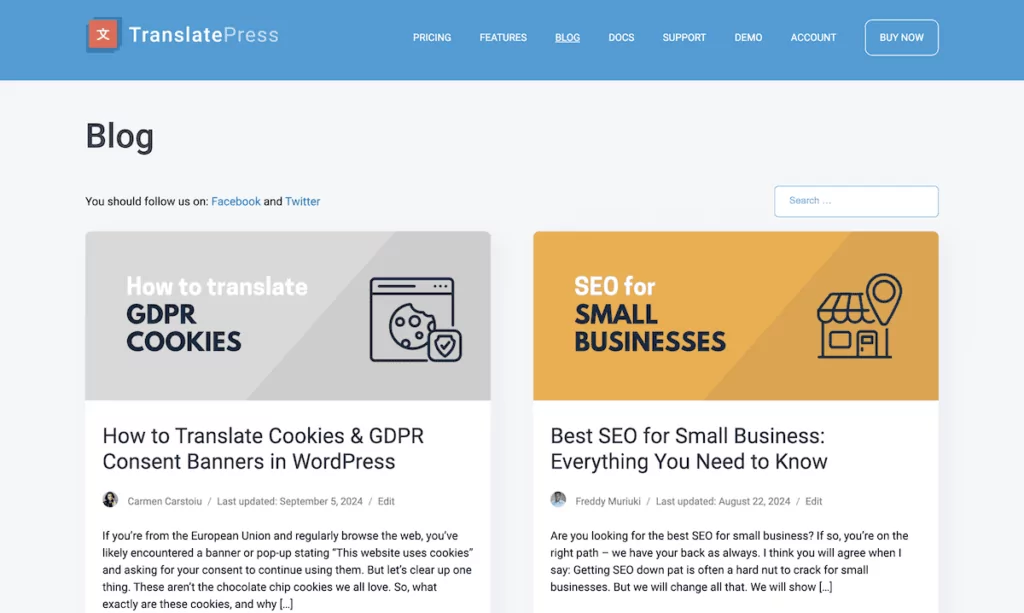
This means guest blogging is particularly powerful for international link building. Here’s how to get your site a placement on an location-specific blog:
- Identify relevant platforms. First, research the most popular blogs and online publications in your target countries that accept guest posts. Tools such as Ahrefs or SEMrush can help you find potential opportunities, but even Google Trends can work well here.
- Tailor your pitch. When you initially reach out to international blogs, your pitch should reflect an understanding of their audience and cultural nuances. Often, this means reading suitable quality posts, and going over any public guidelines the site publishes.
- Create localized content. Of course, you’ll want to write content that resonates with the local audience. This often means using local examples, addressing region-specific pain points, or referencing local trends.
- Include relevant links. Within your guest post, include natural links back to your website, preferably to pages that are relevant to the local audience. However, remember that most blogs will have guidelines on the number of links you can include—often using
nofollowtags.
It’s worth noting that many guest posting opportunities, especially on high-authority sites, often involve paid placements. While this practice is common, it’s important to ensure that you properly disclose any paid links to comply with search engine guidelines.
2. Partnering with Local Influencers
Influencers saturate social media, but this isn’t the only way you can come into contact with them. In fact, using local influencers in a market can be a powerful tool for link building.
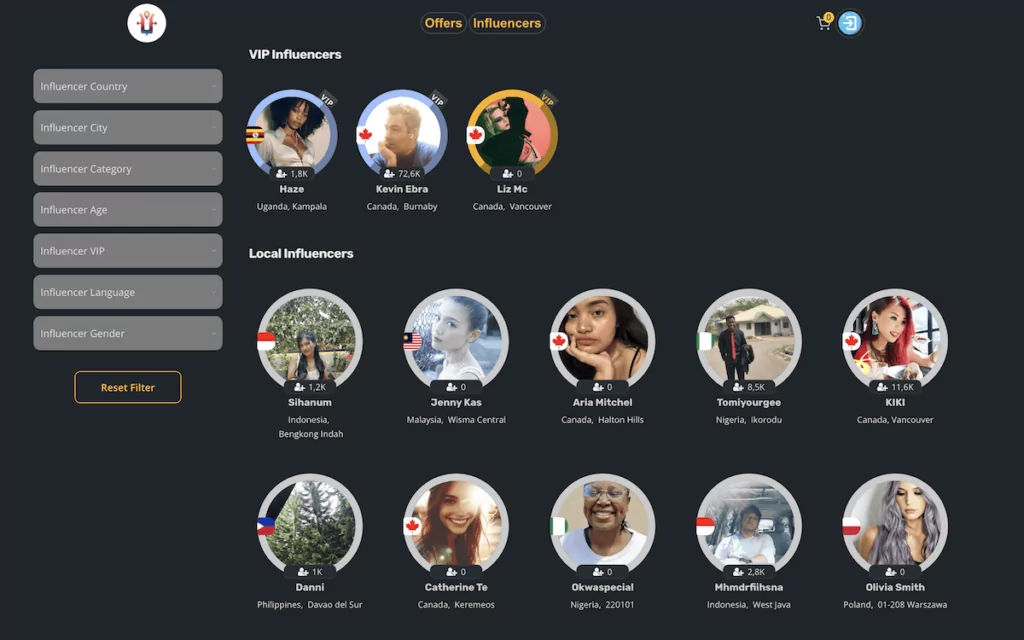
Not every influencer or opportunity will be perfect for you, but finding and leveraging them for your international link building strategy follows the same path:
- Identify relevant influencers. Look for influencers within your industry who have a strong presence in your chosen target markets. Tools such as BuzzSumo can help you find influential figures in specific regions. However, don’t discount simply searching across social media channels.
- Develop collaborative content. Once you find the right influencers, collaborate to create content that provides value. This could be in the form of interviews, joint research projects, or co-authored articles.
- Leverage multiple platforms. Despite the wealth of content you can create, don’t limit yourself to blog posts. Consider podcasts, webinars, or video collaborations, which can lead to links from various sources.
Remember, the best partnerships are mutually beneficial. If you can offer content of value to the influencer and their audience—not just a link exchange—this can provide long term benefits. Not only will the content be live for longer, it will generate more traffic and give you a way to create with that influencer in the future too.
3. Leveraging Local Directories and Business Listings
Most of your efforts to crack local search will focus on content creation. This is a similar approach to lots of other marketers and agencies with an international link building strategy. Even so, don’t discount some of the other ways to gain visibility online.
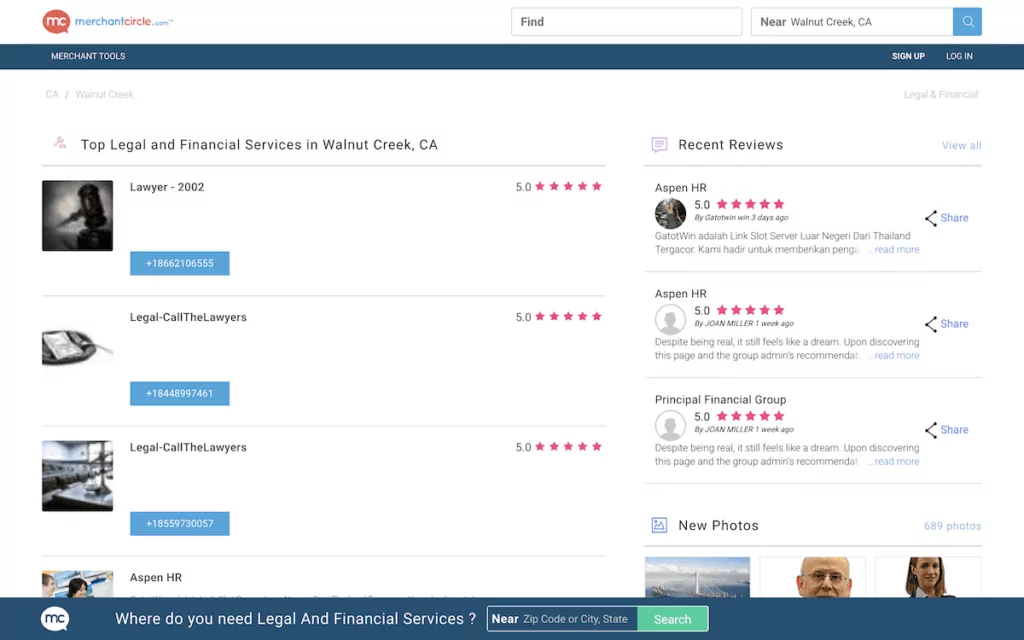
For instance, directory linking isn’t as powerful as it once was. However, it can still play an excellent secondary role in a diverse link building strategy—especially for local SEO. Here’s how to approach this:
- Identify reputable local directories. Research and list high-quality, region-specific directories relevant to your industry. This can be tough for some industries, given the decay of this form of link listing.
- Create localized business profiles. When submitting your business information, ensure it’s accurate and localized for each region. This includes using local addresses, phone numbers, and adhering to local formatting conventions.
- Go beyond basic listings. Directories that let you create more detailed profiles could be more beneficial. Look for ways to create product descriptions, images, or even display customer reviews.
Finally, once you have links within directories, have a system to monitor and update them. Consistency in your business information across the web is going to be crucial in a number of areas.
4. Creating Localized, Linkable Assets
One of the most effective ways to attract international links is by creating content that’s specifically valuable to your target markets. To do this, you have to understand the unique challenges, interests, and needs of your target markets. Tools such as Google Trends can provide insights into region-specific topics and searches.
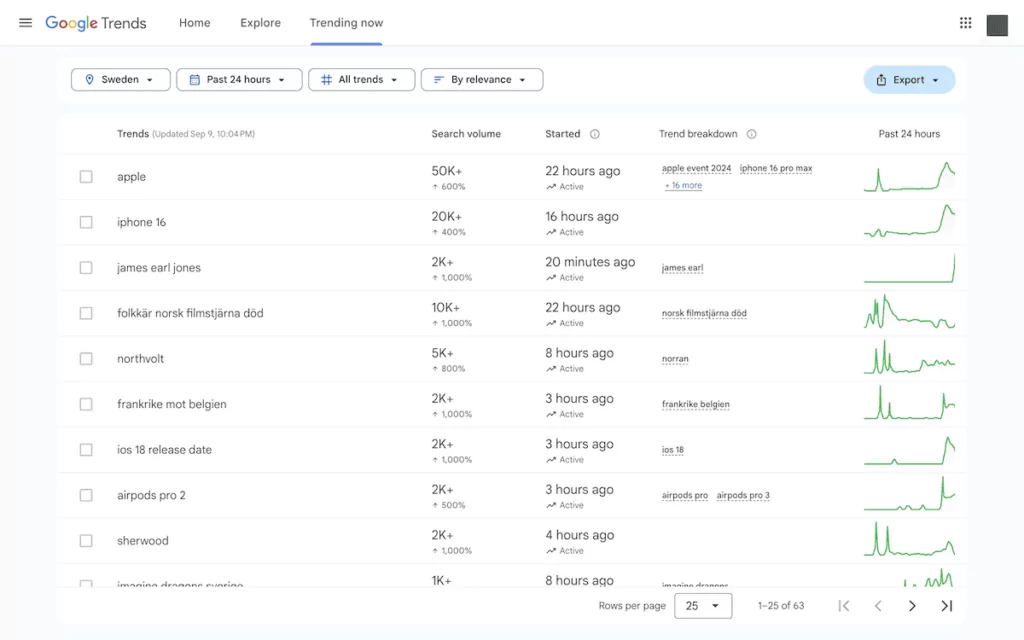
However, there are plenty of other ways to incorporate this into your strategy:
- Develop region-specific resources. You could create comprehensive guides, white papers, or tools that address local market needs. For example, if you’re targeting the German market, you might create a guide on complying with GDPR for German businesses.
- Translate and localize existing content. Don’t just translate your existing content word-for-word either. Instead, adapt it to reflect local culture, examples, and idioms. This is where a plugin such as TranslatePress can let you create localized versions of your content with unique properties.
When it comes to choosing pages that you’ll offer for link building content, consider important pages that don’t rank well, or those with low visibility yet high conversion value. Newer content that needs more time to accumulate links is also a good shout for link building.
5. Engaging in Local Digital PR and Social Media
Digital PR can be a goldmine for high-quality, relevant backlinks. Of course, social media is also a hotbed of link building opportunities and shots to gain more eyes on your content.
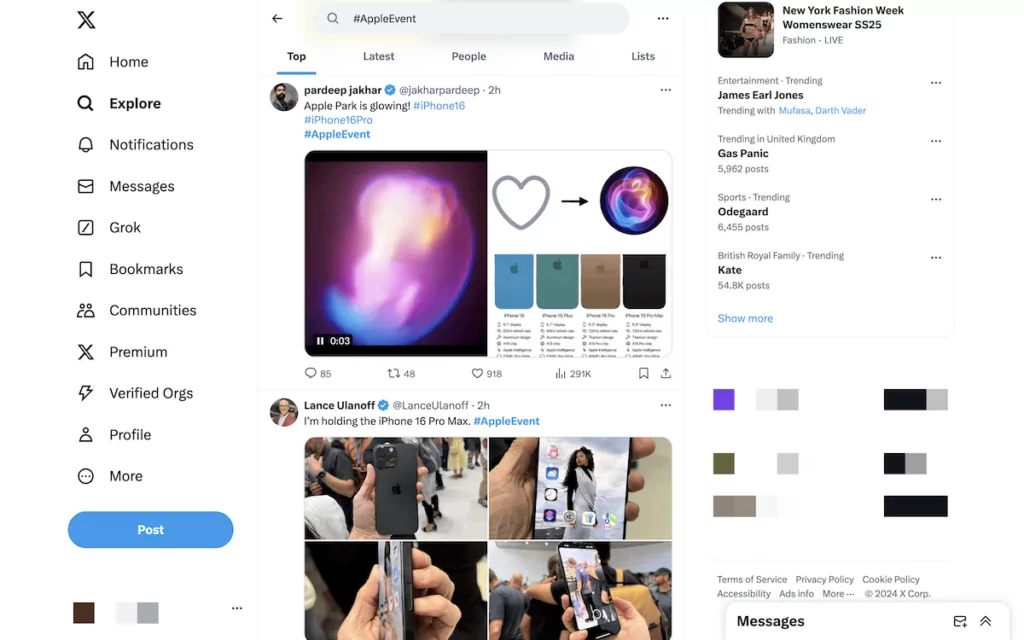
For international link building, look for region-specific events, awareness days, or trending topics that align with your brand. Once you have a list of these, you can look to take action:
- Create localized press releases. When you have news to share, create versions of your press releases or social media posts tailored to each target market. This goes beyond mere translation—consider local angles that make your news relevant to each market.
- Build relationships with local journalists. Platforms such as Help a Reporter Out (HARO) can help you connect with media professionals worldwide. These connections with journalists and bloggers in your target markets can be fruitful.
- Offer local expertise: Position yourself or your brand representatives as experts on topics relevant to each market. This can lead to interview opportunities, expert quotes, and valuable backlinks.
When it comes to leveraging social media, look to engage with local audiences on popular social media platforms in each target market. You couljd share your localized content, participate in local discussions, and build relationships with local influencers and brands. While social media links are often nofollow, they can still drive traffic and lead to other linking opportunities.
6. Analyzing (and Replicating) Competitors’ International Backlinks
Understanding where your competitors are getting their international backlinks can provide valuable insights and opportunities. First off, identify your international competitors, as these might be different from your domestic competitors.
From there, you can go deeper into what each competitor does to win backlinks:
- Analyze their backlink profiles. Ahrefs or SEMrush can help you examine where your competitors find links in your target markets.
- Evaluate link quality and relevance. Not all of your competitors’ links will be worth replicating. Instead, focus on high-quality, relevant links from authoritative sites.
- Develop a strategy to earn similar links. This might involve creating similar (but better) content, reaching out to the same websites, or identifying gaps in your competitors’ strategies that you can fill.
In some target countries, you might find that link building opportunities are scarce due to factors such as population size, cultural issues, or even language barriers. While staying within your industry is ideal, you might need to broaden your scope to related industries or general business sites.
On the contrary, if there’s a lack of existing content in your niche for that country, fill the gap with resources that local sites will want to link to.
Tools and Typical Practices for International Link Building
To effectively manage your international link building efforts, there are some tried and tested tactics to help you along. Focusing on quality over quantity is something I can’t understate. A few high-quality, relevant links from respected local websites will have far greater value than numerous low-quality links.
Maintaining a diverse link profile is also important here. This involves mixing up the types of backlinks. It could be guest posts, business listings, PR mentions, and any other channel you feel is vital. Monitoring that profile and its impact on your search rankings in different regions can help you keep your efforts current.
Remember that building international links takes time. My advise is to focus on developing genuine relationships that provide value, rather than hoping for quick wins. Fortunately, some of the same tools you’ll use for local SEO will work for international link building too. For example, despite being primarily a translation plugin, TranslatePress can be a boon in a number of ways.
How TranslatePress Supports International Link Building
TranslatePress is an ideal way to create localized content to support your link-building efforts.
TranslatePress Multilingual
It lets you create multilingual versions of your website fast, within the WordPress interface, to ensure that your content resonates with local audiences and attracts relevant backlinks:
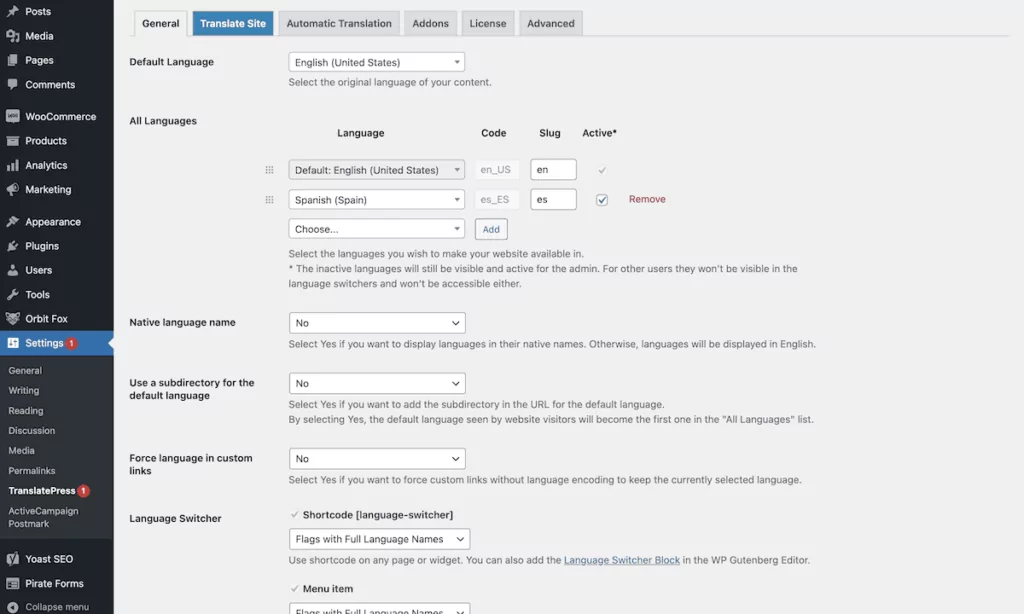
The plugin can support your efforts in a number of ways:
- It lets you create multilingual versions of your website with ease. This means you can create localized landing pages, blog posts, and resources that are more likely to attract backlinks from region-specific websites.
- You have a search-optimized URL for each language, which can help your localized content rank better in local search results.
- TranslatePress offers automatic language redirection based on the user’s browser language. This improves the User Experience (UX), and potentially leads to more organic mentions and links.
- If you target markets that use Right-To-Left (RTL) languages such as Arabic or Hebrew, TranslatePress can assist you.
TranslatePress also works seamlessly with other SEO plugins such as Yoast SEO. These integrations can all be yours on a premium TranslatePress plan.
TranslatePress Is a Great Companion for Your International Link Building Strategy
International link building is both an art and a science. It requires a deep understanding of different markets, a strategic approach to content creation and outreach, and the right tools to manage and monitor your efforts.
Successful international link building is about more than just acquiring links though; it’s about building meaningful relationships and providing value to audiences around the world. It takes time and effort, but the rewards—an increase in global visibility, authority, and business growth—are well worth it.
TranslatePress Multilingual
Do you have any questions about international link building, and using TranslatePress to achieve it? I’d love to hear about it in the comments section below!
